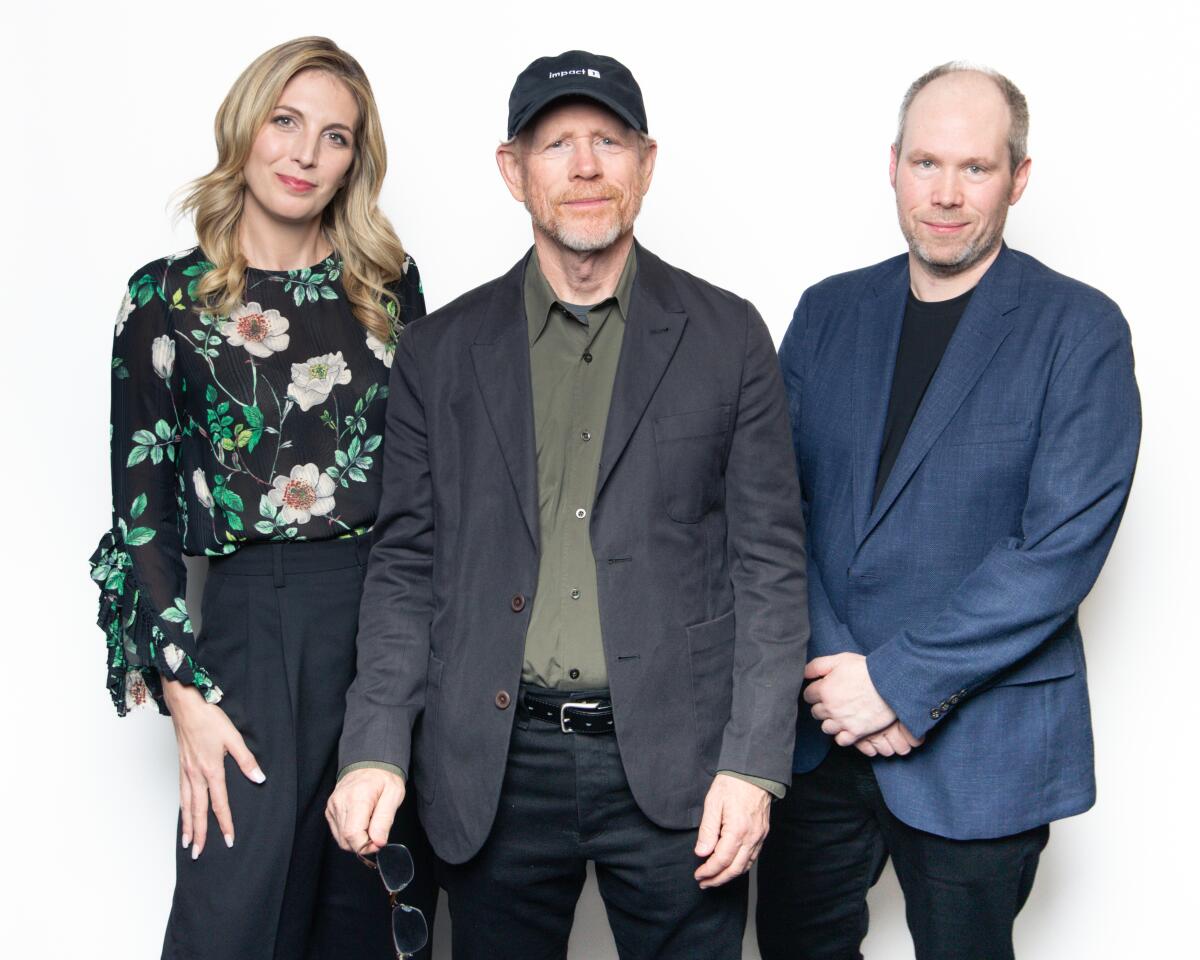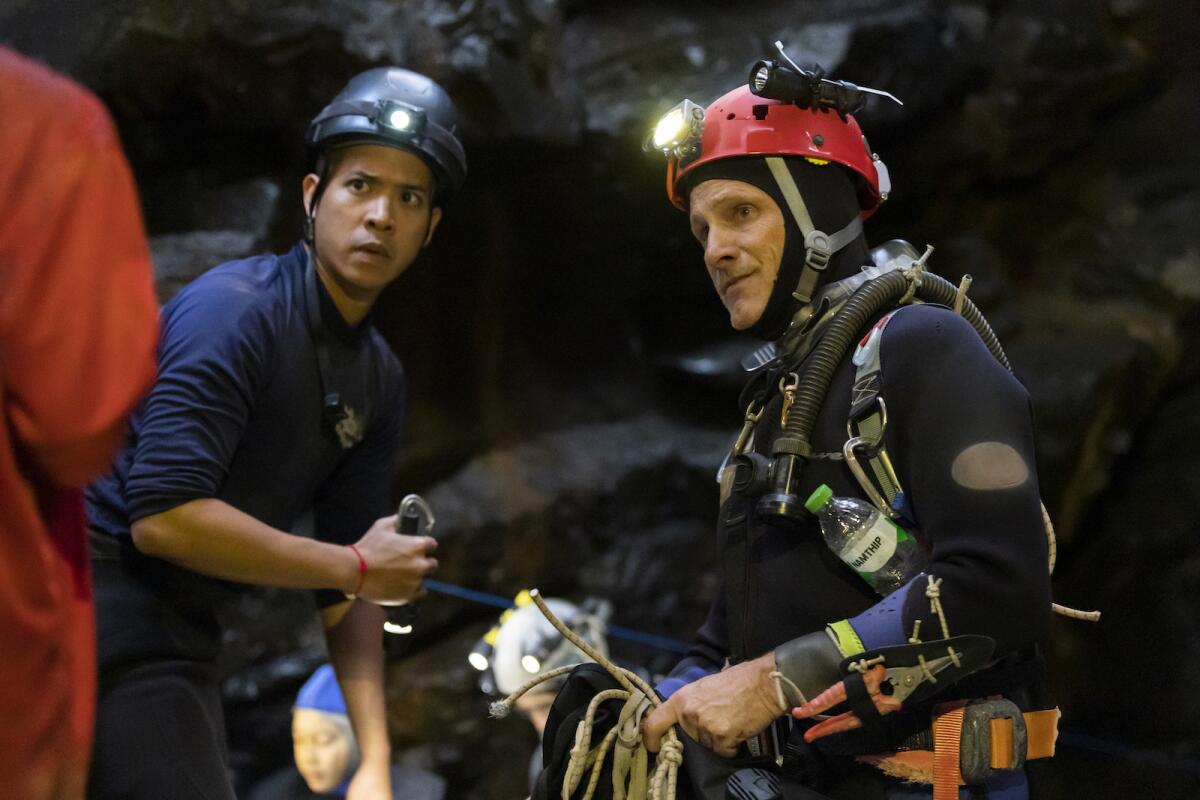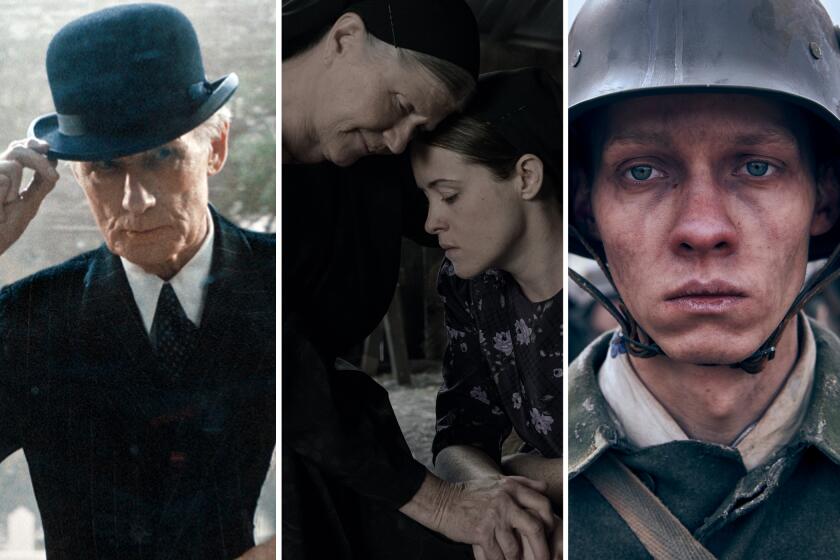Without a villain, water is the bad guy in ‘Thirteen Lives’

- Share via
A typhoon ushered in the summer of 2018 in northern Thailand, triggering a disaster that captured the world’s attention. Thirteen members of a boys soccer team were trapped by rising water in the Tham Luang cave. A rescue effort was led by cave divers Rick Stanton and John Volanthen who anesthetized and extracted the boys unconscious underwater through the 2 1/2 mile cavern, losing none but fellow volunteer Saman Kunan, a former Thai navy SEAL.
The event was captured in numerous documentaries and became a feature film from Prime Video, “Thirteen Lives,” directed by Ron Howard and starring Viggo Mortensen as Stanton and Colin Farrell as Volanthen. In the past, Howard has delivered such technically compelling titles as “Apollo 13,” an Oscar winner for sound, and “Backdraft,” also nominated for its sound design and execution. So on “Thirteen Lives,” the director came with the skills needed to work with A-list supervising sound editors Rachael Tate and Oliver Tarney.
In the movie, audio represents three worlds — underwater, inside the cave and outside the cave.
“The sound in the cave is very mid-centric,” Tate says. “If anyone’s ever been diving, you know that sound. It’s very closed off and that expresses the isolation down there where you have all this solid rock.”
In a movie without a villain, water is the bad guy. It has no face but a voice as wide-ranging as the philharmonic. In water, sound travels four to five times faster, definition and detail are dulled and the ability to triangulate its source is compromised, which gave Tate and Tarney multiple disorienting possibilities to work with.
“It almost feels like a two-hander with the divers against the water. So, we tried to give the water as much character as possible in designing it,” says Tarney. “Even just the currents, the silt, everything building up against them, you feel it coming in large waves like it’s attacking them.”

The team used production audio when they could, but found that underwater recordings made with hydrophones on the Australia film set were sometimes tainted with buzzing or the sound of pumps and filtration. So, late in the process Tate and Tarney accompanied real-life rescue diver Volanthen to a cave system in the U.K. where they spent a day recording audio. The sound of Farrell breathing underwater is actually Volanthen.
“They couldn’t even see their hand in front of their face at times,” Tate says. “It goes to show how much they relied on sound. Their memories of that time were really sound based. And if you can try to swim a mile in their flippers, then you can begin to understand this is the closest we can get people to the experience without flooding the cinemas.”
Facial expressions are limited behind diving masks, so character is often expressed through movement and the sound of breathing. Experienced divers breathe at a regular pace. In a tight tunnel, they control their breath. The less experienced are likely to have anxiety.
“We tried to make this as personal as possible. We were shooting and editing the dives in different ways to feature different characters,” says Howard, noting how critical audio is to the scene in which the children are anesthetized and transported underwater out of the cave, the sound of their breath the only indicator of life. “When you’re diving, you’re aware of your breathing. We had to put the audience in the diver’s head. It’s not what you’d hear if you were in the cave with them, it’s what you’d hear if you were them.”
Foley work was essential to building the track, but effects were recorded dry and then run through Kyma, a program that can simulate underwater sound. “If we did everything underwater, everything would sound identical,” says Tarney explaining his use of the application that allows him to change pitch, lengthen and shorten shots.
Our BuzzMeter film experts predict the Oscar winners in 10 categories. Check out the consensus picks, close races and interesting narratives - and vote in the polls for every category.
In contrast to the sound of the cave is the outside world, captured mainly in northern Thailand where the sound team assiduously differentiated between the country’s numerous dialects. Audio was collected at busy markets, soccer games and gatherings of anxious villagers.
“There are thousands of people, scooters and mud, we tried to use the full spectrum of sound outside,” Tate says. “And it all boils down to a small story inside the cave. You really feel how alone these two [divers] are.”
Tate and Tarney have two irons in the fire this awards season, “Thirteen Lives” and Sam Mendes’ “Empire of Light.” They teamed on Mendes’ previous effort, best picture winner “1917,” for which both were nominated. Tarney has five nominations altogether, including “Captain Phillips,” “The Martian,” “No Time to Die” and “News of the World.”
“You’re always happy to get some recognition from your peers. It’s incredibly humbling,” he says.
“I’ve only got my meager one,” Tate jokes. “But of course it’s amazing. We’d feel lucky to be involved. It’s a great honor.”
More to Read
From the Oscars to the Emmys.
Get the Envelope newsletter for exclusive awards season coverage, behind-the-scenes stories from the Envelope podcast and columnist Glenn Whipp’s must-read analysis.
You may occasionally receive promotional content from the Los Angeles Times.











